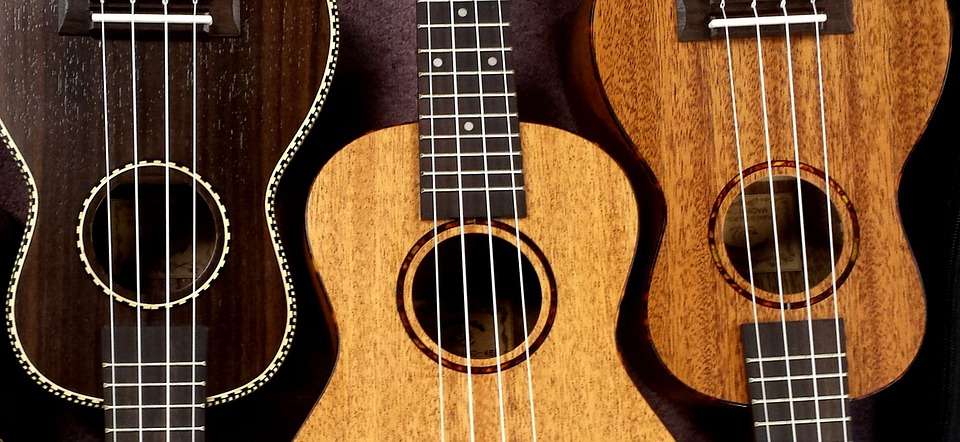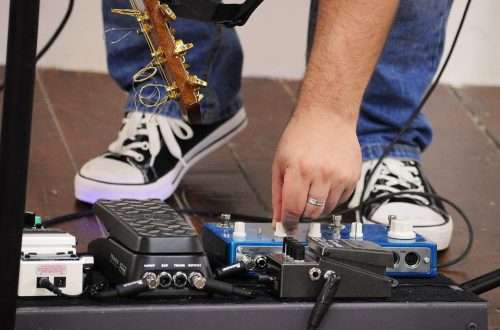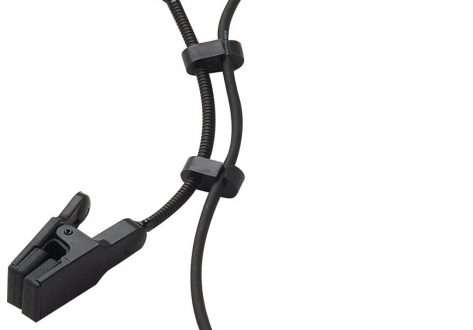
Learning to play the ukulele – part 1
 Advantages of the ukulele
Advantages of the ukulele
Ukulele is one of the smallest stringed instruments that sound similar to a guitar. In fact, it can be called a simplified version of the guitar. Despite its seemingly toy-like appearance, the ukulele is very popular in some musical genres, and has once again experienced its heyday in recent years. In addition to the keyboard and guitar, it is the most frequently chosen musical instrument, mainly due to the fairly easy education and high affordability.
How to start playing
Before you start playing, first of all you should tune your instrument well. It is best to use a special electronic tuner dedicated to the ukulele. By turning the key gently and at the same time playing a specific string, the reed will signal on the display when the string reaches the desired height. You can also tune the instrument using a keyboard instrument such as a keyboard. If we do not have a reed or keyboard instrument, we can download a special application on the phone, which will act as a reed. In the ukulele we have four strings at our disposal, which, compared to the acoustic or classical guitar, have a completely different arrangement. The thinnest string is at the top and this is the fourth string that produces the G sound. At the bottom, the A string is first, then the E string is the second, and the C string is the third string.
Ukulele grips are extremely easy to grab compared to, for example, a guitar. It is enough to engage one or two fingers for a chord to sound. Of course, remember that we only have four strings in the ukulele, not six as in the case of the guitar, so we should not require the same full guitar sound from this instrument. For example: the basic C major chord is obtained by using only the third finger and pressing down the first string on the third fret. For comparison, in a classical or acoustic guitar we have to use three fingers to catch a C major chord. Remember also that when playing the ukulele, fingers are counted, just like the guitar, without taking into account the thumb.
How to hold a ukulele
First of all, we must be comfortable, so the instrument should be held in such a position that we can easily catch certain holds. The ukulele is played both sitting and standing. If we play sitting, then most often the instrument rests on the right leg. We lean the forearm of the right hand against the soundboard and play the strings with the fingers of the right hand. The main work is done by the hand itself, only the wrist. It is worth training this reflex on the wrist itself, so that we can operate it freely. If, however, we play in a standing position, we can place the instrument somewhere near the right ribs and press it with the right hand in such a way that the right hand can play the strings freely. The beating of the individual rhythms is very similar to the guitar beating, so if you have some experience with the guitar, you can apply the same technique to the ukulele.

The first ukulele practice
At the beginning, I suggest practicing the beating movement itself on the muted strings, so that we catch a certain pulse and rhythm. Let our first hit be two down, two up, one down, and one up. For ease of use, this diagram can be written somewhere on a piece of paper in the following way: DDGGDG. We practice slowly, looping it in such a way as to create an uninterrupted rhythm. Once this rhythm starts to come out smoothly on the muted strings, we can try to introduce it by playing the already mentioned C major chord. Use the third finger of the left hand to hold the first string on the third fret, and play all four strings with the right hand. Another chord I propose to learn is the G major chord, which looks similar to the D major chord on a guitar. The second finger is placed on the second fret of the first string, the third finger is placed on the third fret of the second string, and the first finger is placed on the second fret of the third string, while the fourth string will remain empty. Another very simple chord to play is in A minor, which we get by placing only the second finger on the fourth string of the second fret. If we add the first finger to the A minor chord by placing it on the second string of the first fret, we get the F major chord. And we know the four easy-to-play chords in C major, G major, A minor, and F major, on which we can already start accompanying.
Summation
Playing the ukulele is really easy and fun. You can even say that compared to the guitar it is child’s play. Even on the example of the known F major chord, we can see how easily it can be played on the ukulele, and how many more problems it is to play it purely on the guitar.





